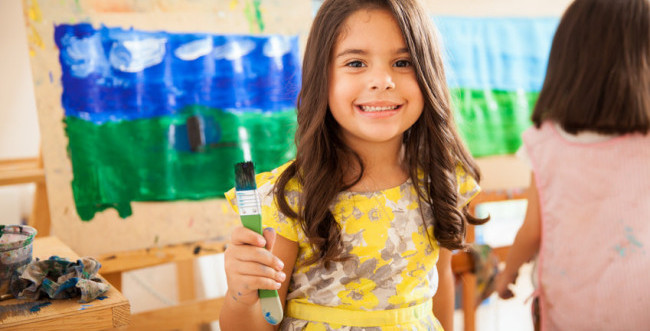 As the parent of an anxious child, you may already know about the power of meditation, deep breathing and mindfulness as tools for quashing anxiety. And there are few more you can add to your anxious child’s toolbox: a paintbrush, paint, markers, pens – and plenty of blank white paper.
As the parent of an anxious child, you may already know about the power of meditation, deep breathing and mindfulness as tools for quashing anxiety. And there are few more you can add to your anxious child’s toolbox: a paintbrush, paint, markers, pens – and plenty of blank white paper.
That’s right. The creative act of producing art can help with anxiety that’s ongoing and mild, acute and occasional, or any combination of the above. Using art to alleviate anxiety works because the art creation process:
- Automatically calms the nervous system
- Focuses attention on creating and away from worries and woes
- Gives the nervous system a chance to regulate
- Opens the door to other emotions, thoughts, compassion and empathy, which pave the way for processing more difficult experiences
- Allows for nonverbal expression
- Provides a visual representation and different perspective of a situation
- Connects people with their inner sense of vitality
All this and you get some cool artwork to hang on the fridge, to boot.
Art Exercise to Try
Another benefit of using art to cope with anxiety is the immediate results. This applies to both the finished art project as well as the rapid relief. Anxiety can deflate rather quickly when we find a way to let it out, and this art exercise can be the ideal outlet.
The Anxiety-Free Circle
This two-step exercise came from art therapist Amy Maricle’s guest post on the Imperfect Families blog. You’ll need a big piece of paper, a pencil or pen, and a paintbrush and paints. Any type of opaque paint will work; no watercolors!
Step 1: Getting out the Anxiety
- Draw a large circle on a piece of paper, tracing a large pot, pan or other object if necessary.
- Write inside the circle “I feel anxious because: ____.”
- Have your child fill in the blank, writing down everything that’s bothering him or her.
Step 2: Bringing in the Solution
- Have your child paint over the words, filling up the entire circle with any colors and patterns he or she chooses.
- Allow the paint to dry while talking about the different characteristics that could help your child deal with the things that are bothering him or her. For instance, if the anxiety was stemming from an upcoming test, dedication to studying could help. Dedication can be one of the solutions. The characteristics can be ones your child has, wishes to have or is working on developing.
- Once the paint is fully dry, write at least one positive characteristic or trait in the center of the painted circle.
Repeat this exercise as needed or desired, and you and your anxious child will eventually have a gallery full of anxiety-free circles packed with positive traits and phrases you both can learn from and admire.
You’ll also get a chance to deepen your connection to each other, with your child freely sharing his or her feelings and you just as freely lending an ear to listen and a big hug for support.
SOURCES:
Photo Credit: Jessica_PFP Flickr via Compfight cc





